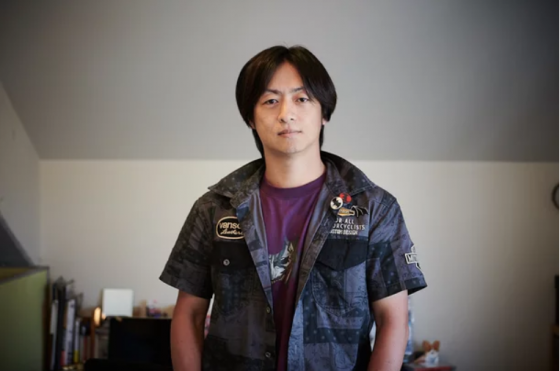
What You Need to Know:
- The folks over at Tokyo Otaku Mode are proud to bring you an exclusive interview with Kamikaze Douga, a leading Japanese studio that has worked on popular titles such as Batman Ninja, Pop Team Epic, as well as opening themes for the first three parts of Jojo’s Bizarre Adventure, the ending theme of Touken Ranbu: Hanamaru, Idolish7’s “WiSH VOYAGE” music video, and more. They"ve given us the great privilege of sharing this interview with you, so please take the time to read it and also fill out the survey at the end! While you"re at it, be sure to check out the official content page which discusses "Anime Production Studios Gaining Global Attention and Paving the Way to the Future".
- This is just one of many interviews that the team have conducted, but this one in particular is quite special. The density of one cut. The passion condensed into a work. Something that no one can deny about Kamikaze Douga’s works is their unique visuals. In the first half of 2018, they celebrated the release of the hit anime Pop Team Epic as well as the international release of the studio’s first feature-length film, Batman Ninja. Kamikaze Douga has become a leading Japanese anime studio in the fifteen years since its inception.
- The name “kamikaze” was chosen for the meaning “to perform recklessly without looking away.” Tokyo Otaku Mode sat down with Junpei Mizusaki, the CEO of Kamikaze Douga, the studio that lives up to the meaning of its name, and the director of Batman Ninja. We have the full interview for you right here, so let"s take a look into the life of Kamikaze Douga!
Source: Official Press Release
Batman Ninja Trailer
"Batman Ninja" trailer (English language)
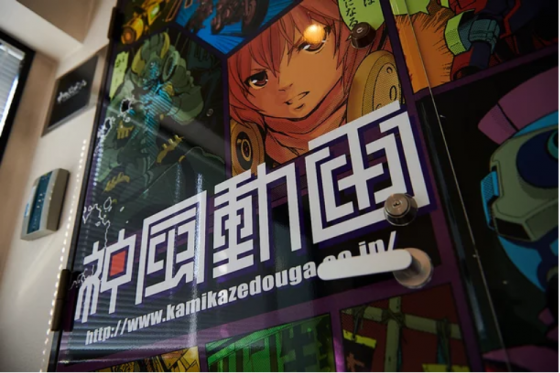
THE SYMBOL OF KAMIKAZE DOUGA’S OFFICE IS THIS DOOR.
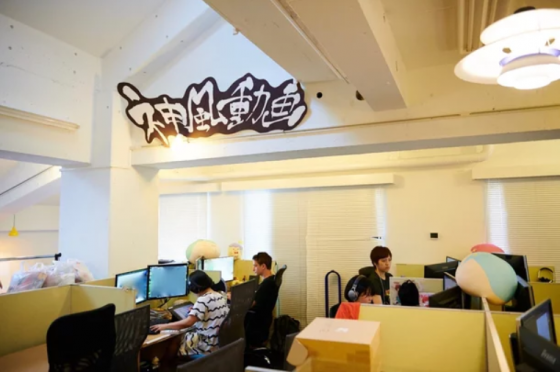
THE STUDIO HAS THE LOGO HANGING UP.

THIS IS WHAT IT LOOKS LIKE WHEN A STUDIO EMPLOYEE IS HARD AT WORK.
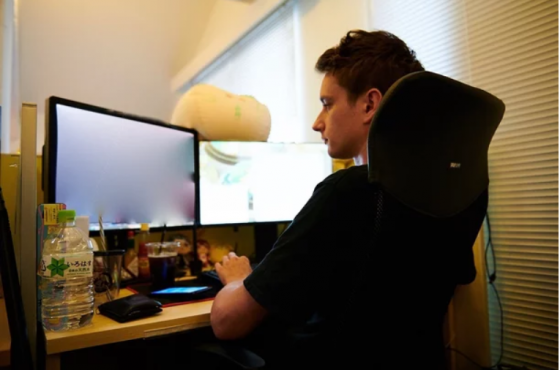
MR. THIBAULT TRESCA, WHO APPEARED IN POP TEAM EPIC, IS ALSO IN THE MIDDLE OF PRODUCING SOMETHING!
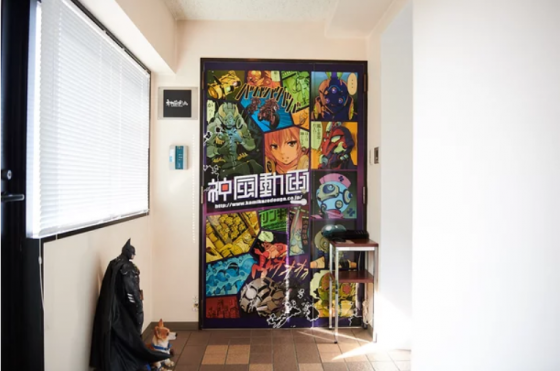
THE ENTRANCE OF KAMIKAZE DOUGA, WHICH IS IN JINGUMAE, AN AREA OF TOKYO NEAR HARAJUKU.
I Want To Create CGI Appropriate For a Japanese Person
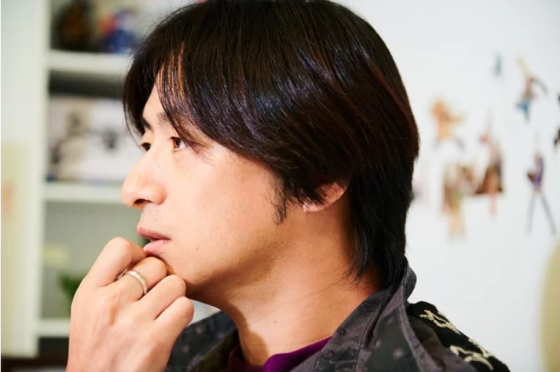
TOM: Please tell us about why you founded the studio.
Mizusaki: It’s been a while since I’ve talked about starting the studio.
At first, I didn’t imagine creating a studio that would deal with projects and genres of this scale. At first, it was a three-person production unit that just worked without forming a legal corporation.
I don’t think there were many anime created by just a few people twenty years ago. But we started Kamikaze Douga as a test to see if the three of us could create anime using CGI software, thinking of it as another team member.
We didn’t want to come up with realistic or figure-like models like Pixar and other Hollywood studios use, so we experimented and researched whether or not we could use CGI as a substitute for cel animation.
It was something that most people weren’t trying, and what we made ended up winning a film contest because it was so rare. We decided to make that our job instead and we properly started a studio as a corporation.
We had a problem with the film and anime industry as Japanese studios tend to aim for CGI that looks like Pixar and other Hollywood studios. Why is everyone using CGI to make images that look American? We chose the studio’s name with a slightly strong feeling of what’s wrong with Japanese people doing their best to make CGI that’s appropriate for Japanese people?
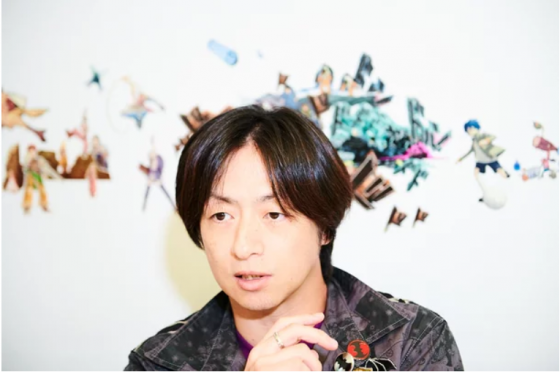
Raise the Quality of the Worst Cut
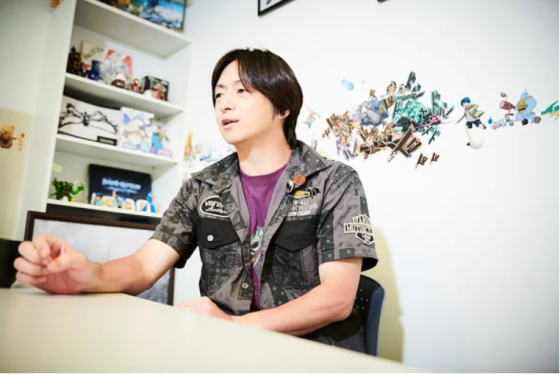
TOM: Kamikaze Douga’s images are very unique. I believe that this studio is aiming for something in between 2D and 3D in a way that only this studio can do. Where does that uniqueness come from?
Mizusaki: I don’t think that we’re forcing ourselves to work our way there, but it’s just our base. I like the density of, for example, Weekly Shonen Jump’s front cover.
Having graphic design experience is really useful. I know how to handle flyers, websites, publishing layouts, typesetting, images, and block copy. If I put this here, it will look denser or if I put that there, it will improve the arrangement. That foundation is now basically muscle memory, so while the film might end up looking very dense, it isn’t like we do that much more work. We just focus on where and how to put things.
Another thing we do straightforwardly is look through the entire film, choose the worst cut, and raise its quality. When we do that, we can find the second-worst cut. It isn’t about making a good cut better, but to find something low quality and fix it. By doing that, the average quality naturally rises.
We’ll say things like, “This bothers me, but it isn’t critical so we can leave it.” But the next day it’ll be fixed. (Everyone laughs)
I’m really grateful to everyone.
“Compromise is Death”
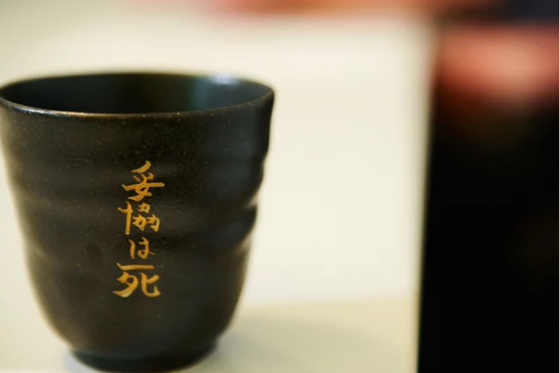
TOM: What has been the hardest period for the studio?
Mizusaki: Right now, as a director, I’m in a position where I can have everyone gain experience and perform different roles, but it was the hardest when I was at the forefront of things.
We were trying to push out work using an animation production technique that the rest of the world hadn’t approved of, so I was personally in charge of the highest number of CGI cuts. That amount of work was insane. For those 21 days, there were times when I didn’t even lie down to sleep.
Then, a turning point came in the form of a music video made using animation. If we were able to succeed with that project, then Kamikaze Douga’s position would change.
At the very end of that project, I gave up on a single cut. It was a cut that a normal person wouldn’t notice. It wasn’t a critical mistake and we were able to release it in the best quality we could, but since I was really on the verge of collapsing, we released it without fixing it. I usually wouldn’t do such a thing, though.
But after that, I’ve had to see that cut on multiple occasions, and it makes me fidgety. I know that I’m the only one who notices, but I just think about how we could have made it a little better. I feel a little dispirited when I see it and I can’t be confident about it. Even though it’s something everyone made with pride, I feel guilty about that.
It makes me feel like I died. You’ll die if you compromise. “Compromise is death” doesn’t mean, “Don’t compromise,” nor does it mean, “You should die if you compromise.” It means, “Do you have the resolve to carry this project to your death?”
I Want to See The Idiosyncrasies Drawn By Satisfied People
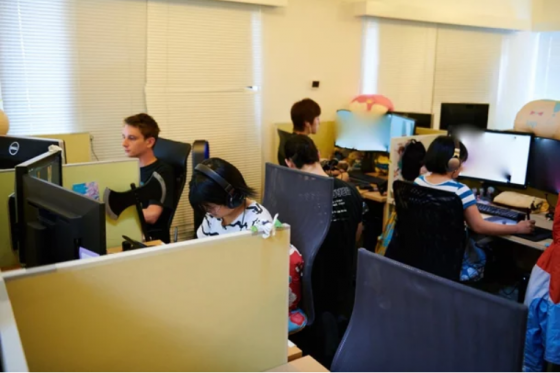
Mizusaki: We already talked about how we work bottom-up from the worst cut, but the Japanese animation industry generally shares the same viewpoints. I dislike that “Japanese animation industry is like this, this is what’s common sense” way of thinking.
TOM’s note: In Japan, the low wages and difficult working conditions for animators are often brought up as a social problem.
At Kamikaze Douga, we have created an environment with everything that staff members need. We receive the amount of money needed during production. That’s a must. No staff members stay at work late, and if they do overtime, they properly get paid for it. It’s what is only natural, but I want it to become normal.
I want to see how Japanese animation will change through the idiosyncrasies drawn by people who are satisfied by eating right, enjoying themselves, spending time with their families, taking holidays, reading their favorite manga, and watching their favorite movies.
There’s No Such Thing as An Absolute Right Answer

TOM: What experiences led you to thinking about creating this kind of organization?
Mizusaki: I don’t know what precise action led to it, but I’ve always moved around. My father was in the Self-Defense Force, so every four years, we would move. I lived in four different areas in elementary and middle school, so I’ve noticed a lot of things after having seen different regions.
There is no absolute right answer in adulthood. In different elementary schools, they do things differently. Same with middle schools. Even though the textbooks were the same, the teachers had different ways of thinking. But each teacher had something they believed was absolutely correct. I began thinking that maybe adults present illogical ideas to children. That might be the basis for my ideal organization.
How should the people at the top be? There might be times where I’m the source of something irrational. How can I avoid that? I kept growing the company while constantly grappling with these problems.
One of the big differences I have with other people is that I don’t have a hometown. I don’t know what it feels like to go back to my hometown. Maybe because I didn’t have a specific place for me, I wanted to make one. This studio might be it.
I Want People To Know Japanese Anime

TOM: Please let me ask some questions about you not as the studio’s CEO, but as Mr. Mizusaki the director. As the director of Batman Ninja, what message did you want to give to international anime fans?
Mizusaki: When we made Batman Ninja , our strongest thought was that we want people to know Japanese anime. We wanted them to know what Japanese anime is. We didn’t want to force ourselves to match people in the English-speaking world through atmosphere or spirit or vigor, but instead constructed the film to show off the various merits of Japanese anime.
The number of Hollywood movies based on Japanese stories have been increasing. Many of them have been adapted in really bold ways. So, this time, when we were given Batman to work with, we had the similar idea of “when in Rome, do as the Romans do.”
If he’s going to come all the way to Japan, we’re not going to let him come into our home with his shoes on. We’ll still be strict even though he’s Batman. The other characters don’t speak English, either, and though he tried to win using the Batmobile and his communication systems, they didn’t work. He had to fight using the methods of Japan at that time. “When in Rome, do as the Romans do” is one of the themes of the story.
I told DC Comics and Warner Bros. to leave it up to me and to wait for me so I could make a Japanese anime using all the power I had. They allowed me to use their important character, Batman, so I promised not to ruin his character and then went and made an anime with him. DC Comics was really lenient with allowing me to do that.
When we screened the film at WonderCon in Anaheim, I thought the fans would get really mad. Instead, the parts that we designed to be funny or exciting got through to the audience perfectly. Batman has a long history and there have been different Batmans. It’s actually a very humorous series, so I’m really happy that the humor that we included in Batman Ninja got across to the viewers.
What’s A Wonderful Idea?
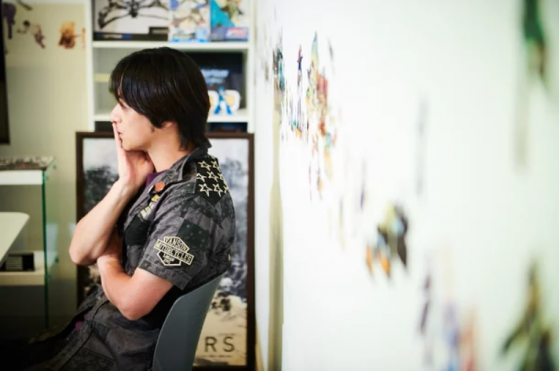
TOM: Before we began this interview project, we surveyed 300 international anime fans and asked them what they wanted to ask Japanese anime creators. The question that popped up the most was, “How do you come up with such wonderful ideas?”
Mizusaki: I don’t think that people who make anime think all their ideas are wonderful. We bring out our values and ideas that we think are great without embarrassment, and it just so happens that the viewers think they’re wonderful.
I also do my best to think about the audience, their point of view, and how they’re watching when I’m thinking of ideas. Will it be on Youtube? Will they watch it in a theater? For example, when I was coming up with difficult jokes for Pop Team Epic , I thought that people who understood the references and those who didn’t could communicate with each other about it, so I decided to make some of the parts without punchlines even harder. The audience was to become the straight man, so we made clips that would make the audience react as the straight man on social media.
I’ve banned the word “motivation” from my vocabulary, since it’s only natural that I should be full of it. That’s talent. If you’re not motivated, then this isn’t the industry for you. If the creators aren’t driven to create anime, then their results won’t be interesting.
Spielberg Won’t Let Me Grow Up
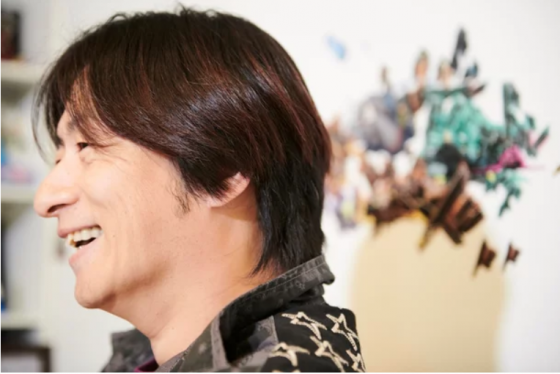
TOM: Are there any foreign creators who influenced you?
Mizusaki: First, there’s Michel Gondry, the director of Eternal Sunshine of the Spotless Mind, who started out filming music videos. The range of being able to do music videos to feature-length films is a dream, but also his work is great, like “Come Into My World” by Kylie Minogue. It’s a simple idea, but I can watch it forever.
There’s also Brad Bird. The Iron Giant is wonderful. He originally worked on The Simpsons but he was able to direct Mission: Impossible, too. That’s amazing. I’ve been a big fan of The Simpsons for a long time.
I know this is a cliched answer, but I can’t leave out Steven Spielberg. When I was in first grade, my father took me and all my neighborhood friends to see E.T. It was a big hit, but it was even bigger within our town. The atmosphere of the film, that universe...It was scary but full of dreams. I drew so many pictures of E.T. and his wrinkles. I kept getting influenced by him little by little, like with Jurassic Park and Minority Report.
Mr. Spielberg won’t let me grow up. When the Gundam Mobile Suit appeared in Ready Player One, I returned to being six years old.
I Want People to Enjoy the Charms of Domestically Aimed Japanese Anime
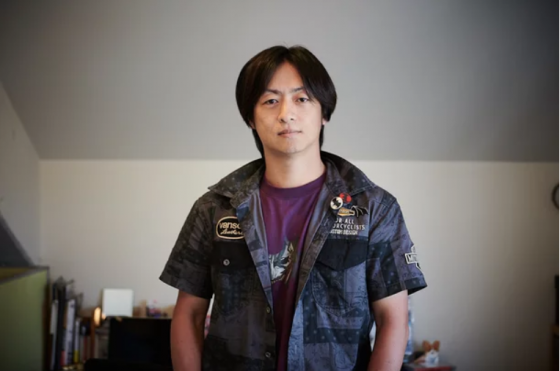
TOM: Please say a few words for anime fans around the world.
Mizusaki: I think we’re keeping Japanese anime at a high level of quality right now, but I don’t know if that will continue. I have some misgivings that maybe the Japanese animation industry will lose its power.
I strongly feel like I have to tell fans around the world that Japanese animation will continue. Since I feel so intensely about it, I think that spirit may have appeared in Batman Ninja.
I like the phrase “Galapagos phenomenon,” referring to how Japanese products are often meant only for the domestic market. Since Japan is an island country, its geography and its history make it a country that has its own unique characteristics. There are no national borders touching ours and we’re still not used to international cooperation. We’re not good at it.
But I think the Galapagos phenomenon is always interesting. It’s important to not be swayed by international standards but instead to work seriously on our projects in a way that suits us.
If anime fans around the world want to keep seeing our work, I want to meet their expectations.
Subscribe to Otaku Coin!


No comments:
Post a Comment